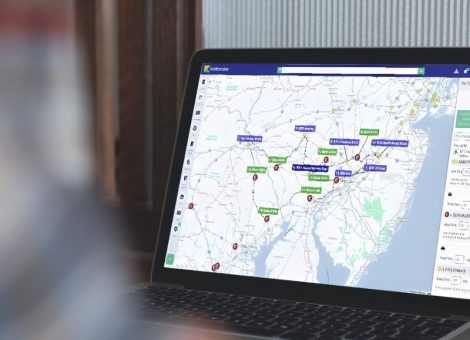The four key concepts for fuel pricing success in 2022
Fuel price management, particularly in fuel retail, can be incredibly complex. But when you’ve been in the retail fuel technology business for over 40 years, like us at Kalibrate, you meet and work with some very successful retail fuel pricing teams from around the world.
We’ve noticed that successful fuel retailers are able to exercise control of their volume-margin-profit trade-offs, move quickly to capitalize on opportunities, understand where they can take volume from competitors, charge premium prices and still maintain strong volumes and leave no money on the table in terms of balancing profit with volume.
We’ve learnt that fuel pricing success does not come down to just one thing—there are four key concepts for success.
Fuel pricing success requires forward-thinking leadership, a realistic strategy, analysts who are committed to finding opportunities in the network, and technology that goes beyond automation. Are you following all four?
When fuel retailers get these four concepts right, our observation is that they are more likely to be the pacesetter in their respective markets.
Here are the four concepts in more detail, to ensure your success:
- Transparent pricing leadership
Fuel pricing leadership is about clarity of purpose and execution, throughout the organization, where anyone from head office to individual site understands the goals and their role in driving the business toward those goals. Too often pricing operates in silos and is seen as a mysterious art of deep data analytics, trends, and complex math. The best pricing teams, however, have clearly stated strategies and are transparent about their pricing decisions, empowering and trusting their team members to make tactical decisions where required. Better still, they establish very strong relationships with their area and site managers. Communication is an open channel where intelligence is rapidly passed back and forth.
Transparent pricing decisions allow a business to better understand issues quickly, attribute success, and pivot when pricing strategies or tactics are not having the desired impact. With extensive reporting and transparency going hand in hand, it becomes essential to allow automation room to breathe.
Transparent leadership allows clear requirements that can be widely understood, creating consistent policies, that result in automation. With automation in place there is then room to focus your time on profit, margin, volume, or other key pricing metrics.
- A clear and achievable strategy
Strong fuel retailers have practical, achievable strategies for their market that are communicated up and down the supply chain. These strategies deliver a clear value proposition to consumers.
The more realistic targets are, the more chance pricing teams have to achieve them. Unrealistic targets, meanwhile, can undermine a pricing team from the start. It’s critical that targets account for macro-economic conditions, micro-economic challenges, wholesale fluctuations, and observed competitor behaviors.
What’s more, it’s important that the whole business understands what your brand represents and what you are trying to convey to your consumers. For example, are you positioning yourselves as a premium brand? Are you prepared to take a hit on volume because you will not compromise your position? What can your customers expect from you — consistency, quality, value for money? All of this is presented back to the audience in the pricing of your products.
A clear strategy that is marketed to your consumers and informed by people on the ground avoids market confusion.
- Giving analysts more freedom
Often pricing analysts are over-burdened with administrative work, particularly when they lack the tools to automate their analysis and pricing execution. In some cases, analysts can look after hundreds of sites in a territory. They simply lack the time to manage every site, micro-market trends, and competitor intel, let alone look for opportunities to improve their market positions.
Integrated pricing technology, however, frees up analysts to innovate. They then have the space to focus on what makes high performance sites so successful and whether other sites would benefit from the same approach. This has a big impact on overall network performance.
There are advanced tools and additional data sets — like mass mobile data and enhanced competitor insights —that can further support business performance by equipping analysts with unique insights into consumer behavior such as day-part segmentation to better understand demand changes throughout the day, and sensitivity analysis to understand how your sites’ volumes react to your own or competitor changes.
- Optimizing technology
Fuel price optimization is the mathematical process of determining the most profitable combination of prices within your price constraints for any given volume goal. There may be multiple price points available for each of your products. Optimization occurs when your algorithm derives the optimal price for each product.
Fuel pricing optimization aims to meet the customer’s volume and unit margin targets. It considers your pricing position, your strategy, your competition, and your market constraints. It aims to maximize individual site performance according to your own definition of strong individual site performance.
For example, a site with a low (volume- heavy) policy will price more aggressively at first to hit target, tightening up the pricing later in the month once the volume has been attained . It will mathematically work out the optimal volume and profit combinations.
Even for the best analyst, calculating the optimal fuel price for their sites manually can take hours or even days. Across volatile global markets, speed of execution is absolutely critical to winning additional volume and margin. Fuel optimization and pricing platforms, like Kalibrate, can calculate the optimal price for every site in your network in minutes.
Interested in learning more about Kalibrate Fuel Pricing? Click here
Read more articles about:
Fuel pricingSubscribe and get the latest updates
You may unsubscribe from our mailing list at any time. To understand how and why we process your data, please see our Privacy & Cookies Policy
Related posts
Location intelligence
Introducing Site Tours: The modern way to plan market tours
Build your next site tour in the Kalibrate Location Intelligence platform.

Fuel pricing
Insight for fuel pricing strategy: Avoiding the noise
For fuel pricing teams, success isn’t about who can gather the most data. It’s about using the right data in the...

